Zen and Vega DDR4 Memory Scaling on AMD's APUs
by Gavin Bonshor on June 28, 2018 9:00 AM EST- Posted in
- CPUs
- Memory
- G.Skill
- AMD
- DDR4
- DRAM
- APU
- Ryzen
- Raven Ridge
- Scaling
- Ryzen 3 2200G
- Ryzen 5 2400G
Integrated Gaming Performance
As stated on the first page, here we take both APUs from DDR4-2133 to DDR4-3466 and run our testing suite at each stage. For our gaming tests, we are only concerned with real-world resolutions and settings for these games. It would be fairly easy to adjust the settings in each game to a CPU limited scenario, however the results from such a test are mostly pointless and non-transferable to the real world in our view. Scaling takes many forms, based on GPU, resolution, detail levels, and settings, so we want to make sure the results correlate to what users will see day-to-day.
Civilization 6
First up in our APU gaming tests is Civilization 6. Originally penned by Sid Meier and his team, the Civ series of turn-based strategy games are a cult classic, and many an excuse for an all-nighter trying to get Gandhi to declare war on you due to an integer underflow. Truth be told I never actually played the first version, but every edition from the second to the sixth, including the fourth as voiced by the late Leonard Nimoy, it a game that is easy to pick up, but hard to master.
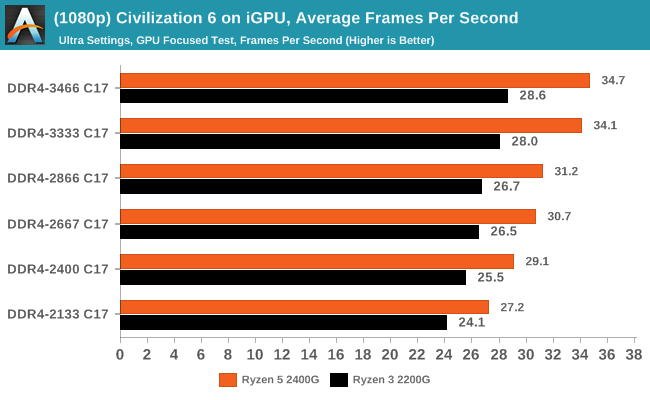
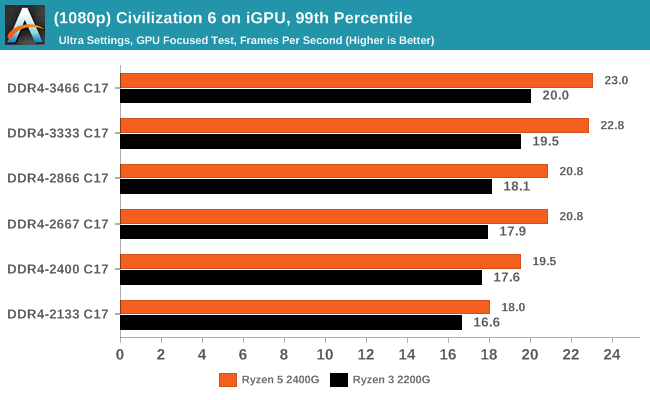
Civilazation 6 certainly appreciates faster memory on integrated graphics, showing a +28% gain for the 2400G on average framerates, or a +13% gain when compared to the APU rated memory frequency (DDR4-2666).
Ashes of the Singularity (DX12)
Seen as the holy child of DX12, Ashes of the Singularity (AoTS, or just Ashes) has been the first title to actively go and explore as many of the DX12 features as it possibly can. Stardock, the developer behind the Nitrous engine which powers the game, has ensured that the real-time strategy title takes advantage of multiple cores and multiple graphics cards, in as many configurations as possible.
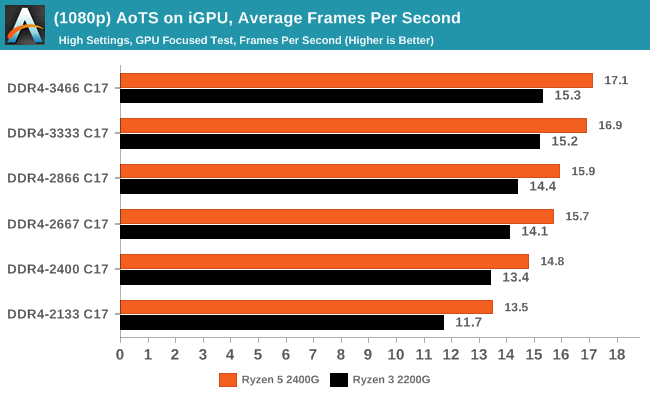
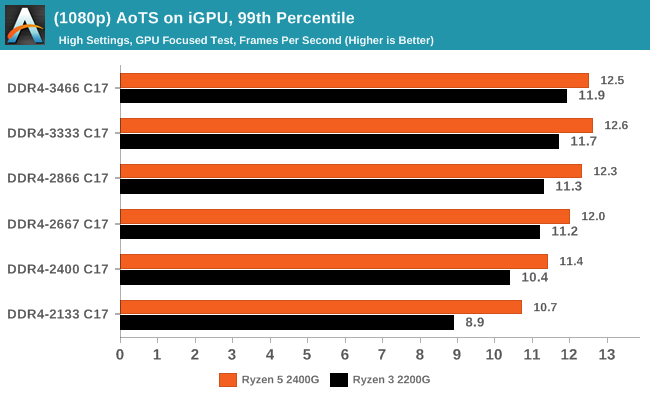
In Ashes, both CPUs saw a 26-30% gain in frame rates moving from the slow to fast memory, which is also seen in the percentile numbers.
Rise Of The Tomb Raider (DX12)
One of the newest games in the gaming benchmark suite is Rise of the Tomb Raider (RoTR), developed by Crystal Dynamics, and the sequel to the popular Tomb Raider which was loved for its automated benchmark mode. But don’t let that fool you: the benchmark mode in RoTR is very much different this time around. Visually, the previous Tomb Raider pushed realism to the limits with features such as TressFX, and the new RoTR goes one stage further when it comes to graphics fidelity. This leads to an interesting set of requirements in hardware: some sections of the game are typically GPU limited, whereas others with a lot of long-range physics can be CPU limited, depending on how the driver can translate the DirectX 12 workload.

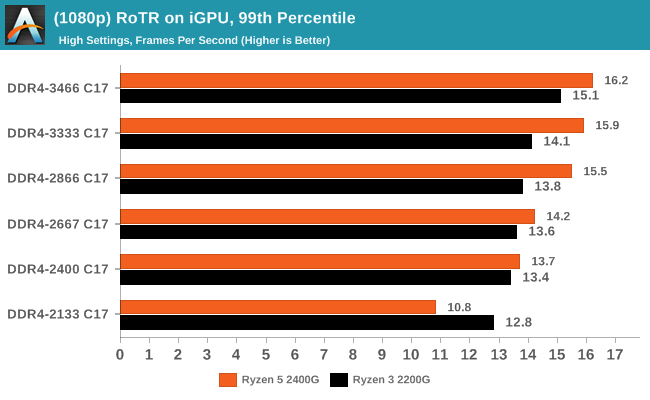
Both CPUs saw big gains in RoTR, however it is interesting to note that the 2400G gained margin over the 2200G: at DDR4-2133, the difference between the two APUs was 12%, however with the fast memory that difference grew to +20%.
Shadow of Mordor
The next title in our testing is a battle of system performance with the open world action-adventure title, Middle Earth: Shadow of Mordor (SoM for short). Produced by Monolith and using the LithTech Jupiter EX engine and numerous detail add-ons, SoM goes for detail and complexity. The main story itself was written by the same writer as Red Dead Redemption, and it received Zero Punctuation’s Game of The Year in 2014.
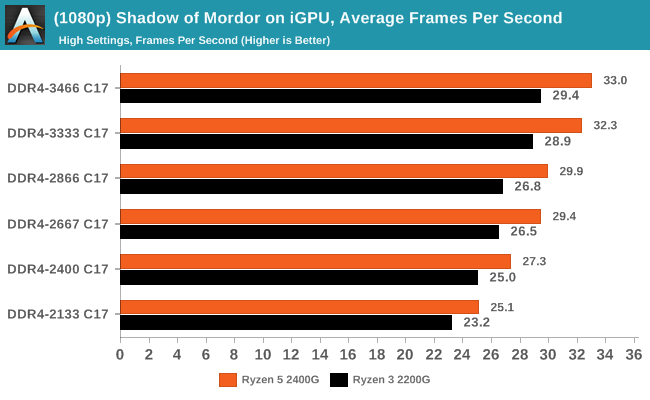
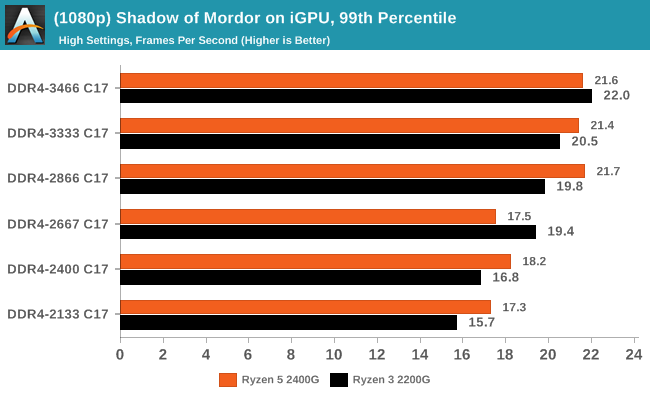
Shadow of Mordor also saw results rise from 26-32% for average frame rates, while the percentiles are a different story. The Ryzen 5 2400G seemed to top our at DDR4-2866, while the Ryzen 3 2200G was able to keep going and then beat the other APU. This is despite the fact that the 2200G has less graphical horsepower than the 2400G.
F1 2017
Released in the same year as the title suggests, F1 2017 is the ninth variant of the franchise to be published and developed by Codemasters. The game is based around the F1 2017 season and has been and licensed by the sports official governing body, the Federation Internationale de l’Automobile (FIA). F1 2017 features all twenty racing circuits, all twenty drivers across ten teams and allows F1 fans to immerse themselves into the world of Formula One with a rather comprehensive world championship season mode.
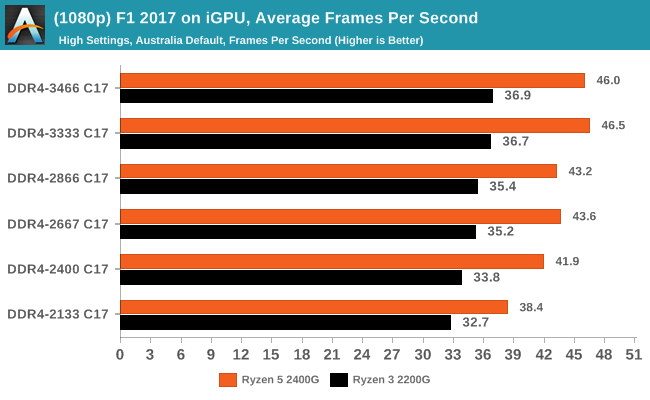
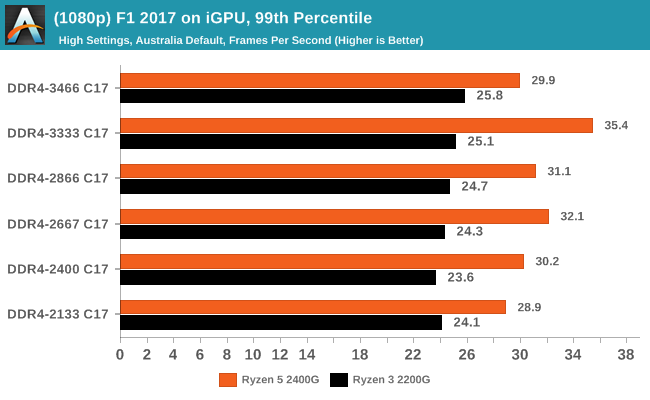
Codemasters game engines are usually very positive when memory frequency comes into play, and although positive generally in F1 2017, it didn't seem to affect performance as much as expected. While average frame rates showed a gradual rise in performance through the straps, the Ryzen 5 2400G 99th percentile results were all over the place and not consistent at all.
Total War: WARHAMMER 2
Not only is the Total War franchise one of the most popular real-time tactical strategy titles of all time, but Sega delve into multiple worlds such as the Roman Empire, Napoleonic era and even Attila the Hun, but more recently they nosedived into the world of Games Workshop via the WARHAMMER series. Developers Creative Assembly have used their latest RTS battle title with the much talked about DirectX 12 API, just like the original version, Total War: WARHAMMER, so that this title can benefit from all the associated features that comes with it. The game itself is very CPU intensive and is capable of pushing any top end system to their limits.

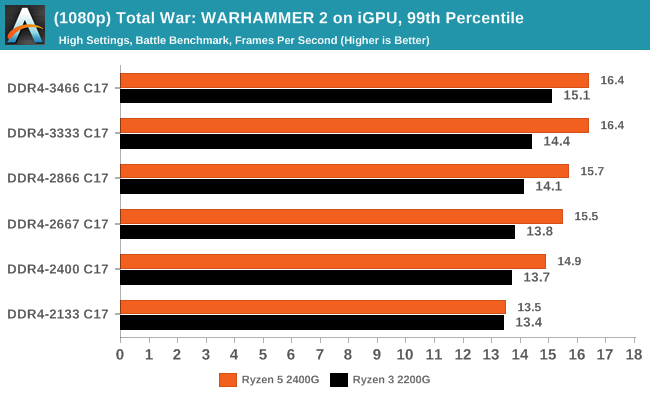



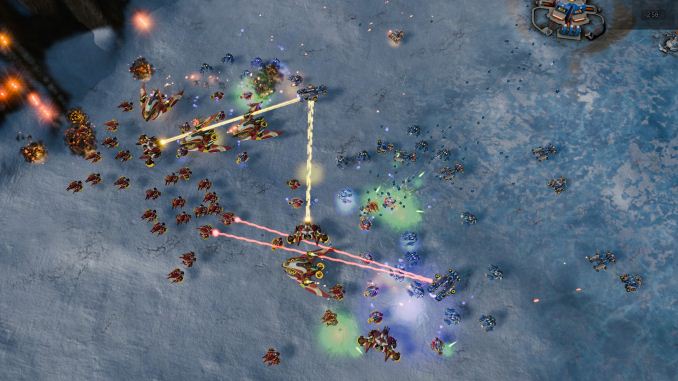
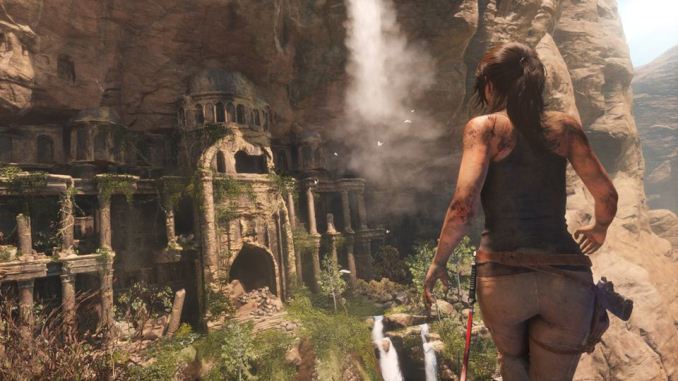

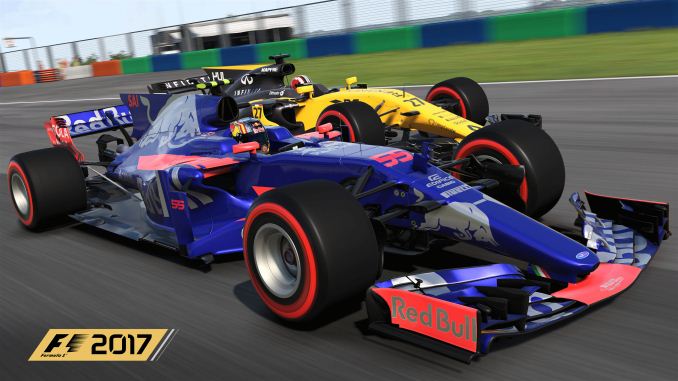









74 Comments
View All Comments
iwod - Thursday, June 28, 2018 - link
When are we going to get faster memory? Haven't we stuck with DDR4 for quite long? Even with DDR5 it doesn't seems to scale well with APU's needs.Chaitanya - Thursday, June 28, 2018 - link
Biggest problem is most modules on market are still stuck with Jedec 2133Mhz and there are hardly handful of Jedec 2666Mhz kits on market. Xmp sucks and it needs to die soon. Ddr5 it seems is just a capacity solution to Ddr4 rather than a speed problem.Maxiking - Thursday, June 28, 2018 - link
I don't think you understand here what's going on. Jedec is just the standard, a set of predetermined memory speed settings Bios will run RAM at. It doesn't matter if rams are Jedec 2133 or Jedec 2666mhz, both specifications are painfully slow. When you run above those Jedec specs, you use XMP profiles. Nothing more, nothing less. If you set up rams in XMP and copy Jedec specs, they will offer the same performance.If anything, it is Jedec what sucks. It takes them years to update and create new memory standards, so DIMM manufacturers have to overclock on their own via XMP.
Samus - Thursday, June 28, 2018 - link
DDR4 for too long? It’s only been around for 4 years!Stuka87 - Thursday, June 28, 2018 - link
It was released 4 years ago, but very little used it. As I recall only Haswell-E used in in 2014. 2016 is when DD4 pretty much became the standard and mainstream chips were using it.Andy Chow - Friday, June 29, 2018 - link
How is JEDEC 2133 slow? It's 17 GB/s. If you run it in quad channel, it's 68 GB/s. I seriously doubt that bottlenecks most workloads. Just look at the 3DPM results, when you're actually doing calculations, and you actually decrease performance with faster memory, probably because the JEDEC standards aren't defined so the RAM and the memory controller aren't behaving perfectly which random io read/write queues. And I bet if you used registered 2133 DDR4, you would actually see a performance increase, even through there's 2-3 more controllers in the way.JEDEC is obviously very prudent and conservative when defining their specs, but by no way are there current specs slow. If your workload is simple and linear (gpu, compression, encryption), then DDR4 isn't the recommended RAM type, HBM is, and the HBM JEDEC specs pre-date the DDR4 ones. DDR4 is optimized for low random io latency, whereas HBM is optimized for sequential io bandwidth. Most datacenter and server workload needs are io latency bottlenecked, not bandwidth bottlenecked, so I doubt on the DDR side the next generations will increase pre-fetch sizes above what they already are, regardless of how that would benefit games, encryption or compression (the last two are asic solved in the corporate world).
bananaforscale - Saturday, June 30, 2018 - link
This. There are *very* few workloads that benefit from more than two channels. Heck, Ryzen 2 is less memory speed dependent than Ryzen was. Now, *latency* could go way down and it would benefit stuff.invasmani - Tuesday, July 10, 2018 - link
Not accurate and 2666MHz Cas 9 for example on a good memory kit has a amazing performance index of 296. I run 2000MHz Cas 7 w/ a performance index of 285 it's actually better overall than the kit is rated for at DDR4 3200MHz Cas 16 by a long shot.Ket_MANIAC - Friday, June 29, 2018 - link
How long exactly have you been stuck with DDR4 and what would you do with DDR5 on a desktop, if I may?Andy Chow - Friday, June 29, 2018 - link
No. We had DDR3 for 11 years before DDR4 came out. DDR4 came out in 2014. DDR5 won't come out before 2019 at the earliest, the specs aren't even final as of today, so you don't really know what you are talking about.The reason that DDR ram will never be good with graphics compared to GDDR is because DDR is optimized for cisc operations while GDDR is optimized for risc operations. You could run GDDR on an apu (the ps4 does this), but this makes the CPU run slower.
An apu will always be a sub-standard solution performance wise. It's a solution that aims to be good for low-cost, low-power consumption, or small form factor. It will always deliver mediocre performance.